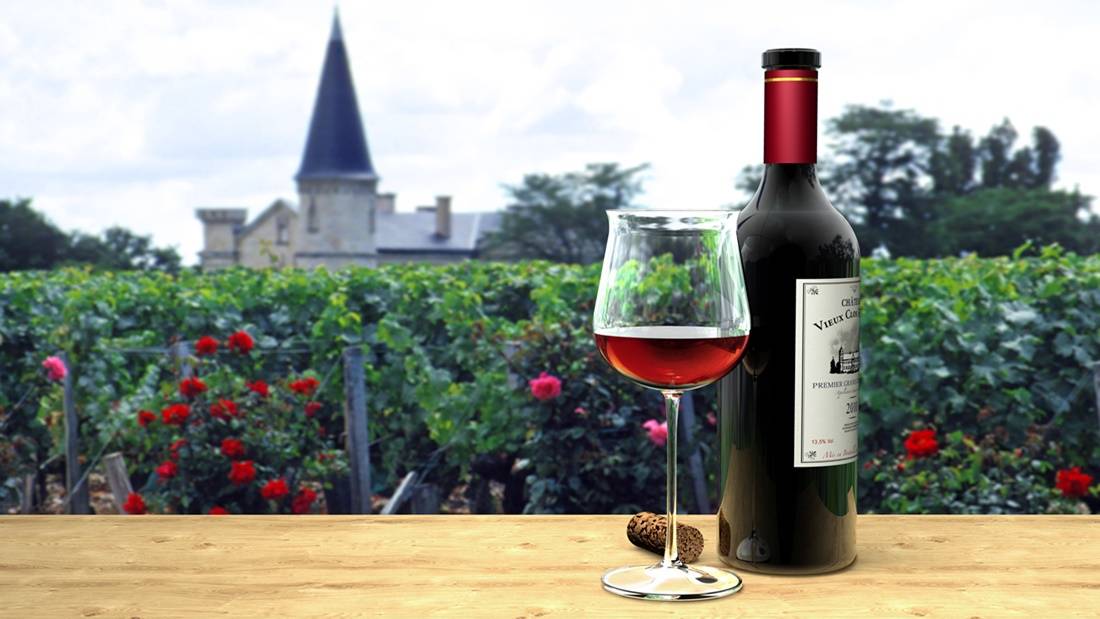What grapes go into the Bordeaux blend? The answer is a little complicated. The name of a blend and not just one grape variety, Bordeaux wine can be made from any number of wines like Sauvignon Blanc, Cabernet Franc, Merlot, and more. The mix varies depending on what kind of Bordeaux you want to make; some Bordeaux is full-bodied with heavy tannins, while others are lighter and fruitier.
The Bordeaux blend gets its name from the winemaking region in France, where it originated. If you’re looking to try a Bordeaux, we recommend finding one made with a mix of Cabernet Sauvignon and Merlot; these two grapes are responsible for the classic Bordeaux flavor profile.
What Makes Up a Bordeaux Blend and What Grape Varieties Make It?
The Gironde River Estuary forms a natural border between Bordeaux and Landes’s neighboring region. The terms “Left Bank” or “Right Bank” refer to winemakers who specialize in different types of red wines made on either side: left-bank producers use primary grapes like Cabernet Sauvignon for their output; righteously banked ones plant Chardonnay as well but favor Malbec over Marsanne which is usually seen more often than not here in this part o France’s Sud Badylean Coast County. There’s also a white Bordeaux wine made from grapes.
Bordeaux’s “Right Bank”
The Libournais region, often known as the “Right Bank,” is notable for producing wine, with Merlot as the dominant blending grape. The Right Bank wines are well-known for their intense flavor. However, Merlot’s proportions (usually over 60% of the blend) tend to be somewhat smoother and have less harsh tannin than Cabernet Sauvignon-dominated Left Bank wines.
Merlot and Cabernet Franc are the primary grapes used in Right Bank blends. Still, winemakers will also add small quantities of other grape varieties such as Cabernet Sauvignon, Petit Verdot, and Carmenère to tweak the flavor profile of the wine.
Bordeaux’s “Left Bank”
The Left Bank, which takes its name from the Gironde River, splits it in two, is home to some of the most prestigious red-wine appellations in the world, including Saint-Émilion and Pomerol. Cabernet Sauvignon is the predominant grape in these blends, and their strong tannins and astringent flavors often characterize them.
Some Left Bank Bordeaux wines also include a small proportion of Merlot (usually around 20%), but it is usually used to soften the harsher notes of Cabernet Sauvignon. Petit Verdot and Malbec are sometimes used as blending grapes in Left Bank wines, but they play a much smaller role than in Right Bank blends.
White Bordeaux
The final Bordeaux wine is not red at all. Bordeaux Blanc is a pungent mixture of mostly Sémillon and Sauvignon Blanc (with a little Muscadelle and/or Sauvignon Gris). Although just 10% of the Bordeaux winemaking, blanc wines are important to the appellation.
FAQ
What are the five noble grapes of Bordeaux?
The five noble grapes of Bordeaux are Cabernet Sauvignon, Cabernet Franc, Merlot, Petit Verdot, and Malbec. These grapes are used to make some of the best Bordeaux wines in the world. If you’re looking for a bottle to impress your friends or wine snob relatives, try picking up a bottle of Bordeaux that was made with any (or all) of these grapes. You won’t be disappointed!
How many grape varieties are necessary to create a Bordeaux blend?
While there’s no right or wrong answer, most Bordeaux is made with a mix of three or four different grape varieties. This gives the wine more complexity and helps it achieve that classic Bordeaux flavor profile. If you’re looking to try a Bordeaux wine, we recommend finding one made with a mix of Cabernet Sauvignon, Merlot, and Cabernet Franc.
What is the most widely grown grape varietal in Bordeaux?
Cabernet Sauvignon is the most widely grown grape in Bordeaux. This grape is used to make some of the best Bordeaux wines in the world. If you’re looking for a bottle to impress your friends or wine snob relatives, try picking up a bottle of Bordeaux that was made with Cabernet Sauvignon. You won’t be disappointed!
What is the difference between a Bordeaux red wine and a Bordeaux white wine?
Bordeaux red wines are made with Cabernet Sauvignon, Merlot, and Cabernet Franc as the dominant grape varieties. These wines are usually strong in flavor, with harsh tannins. Bordeaux white wines are made with Sémillon and Sauvignon Blanc as the dominant grape varieties. These wines are usually pungent in flavor, with a strong aftertaste.
What is the best way to store Bordeaux wine?
Bordeaux wine should be stored in a dark, cool place to age nicely. If you’re not going to drink your Bordeaux wine within the next few years, we recommend storing it in a wine cellar. That way, you can be sure that it will taste its best when you finally decide to open it up!
Final Words
Bordeaux wines are some of the most prestigious in the world, and they are made with a blend of different grape varieties. This article has answered some common questions about Bordeaux wine grapes and blends. If you’re looking to try a Bordeaux wine, we recommend finding one made with Cabernet Sauvignon, Merlot, and Cabernet Franc. Cheers!

